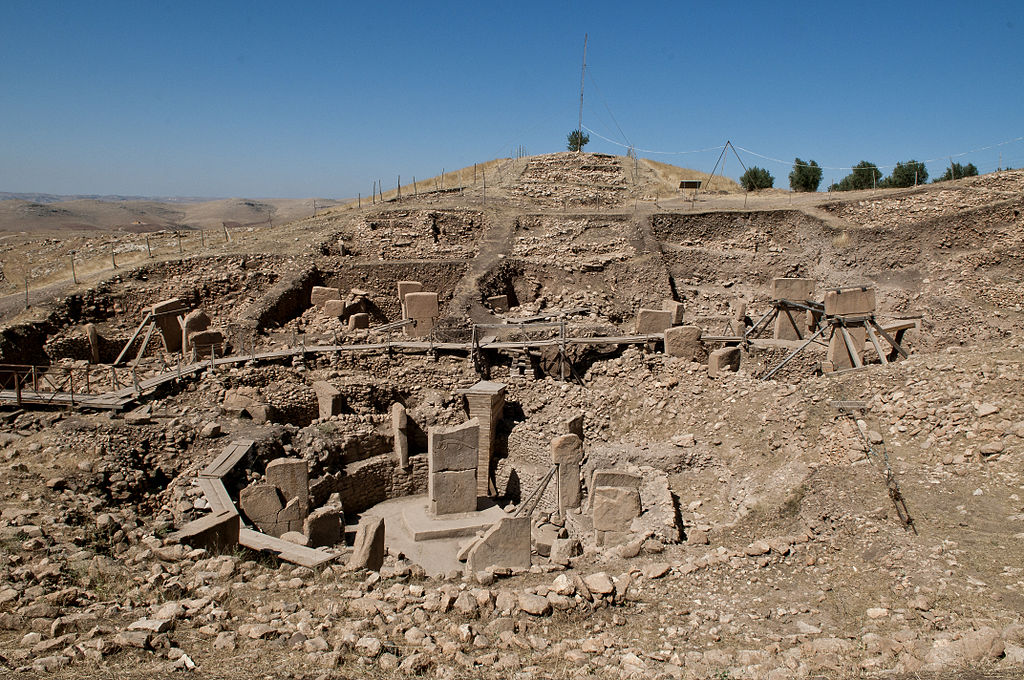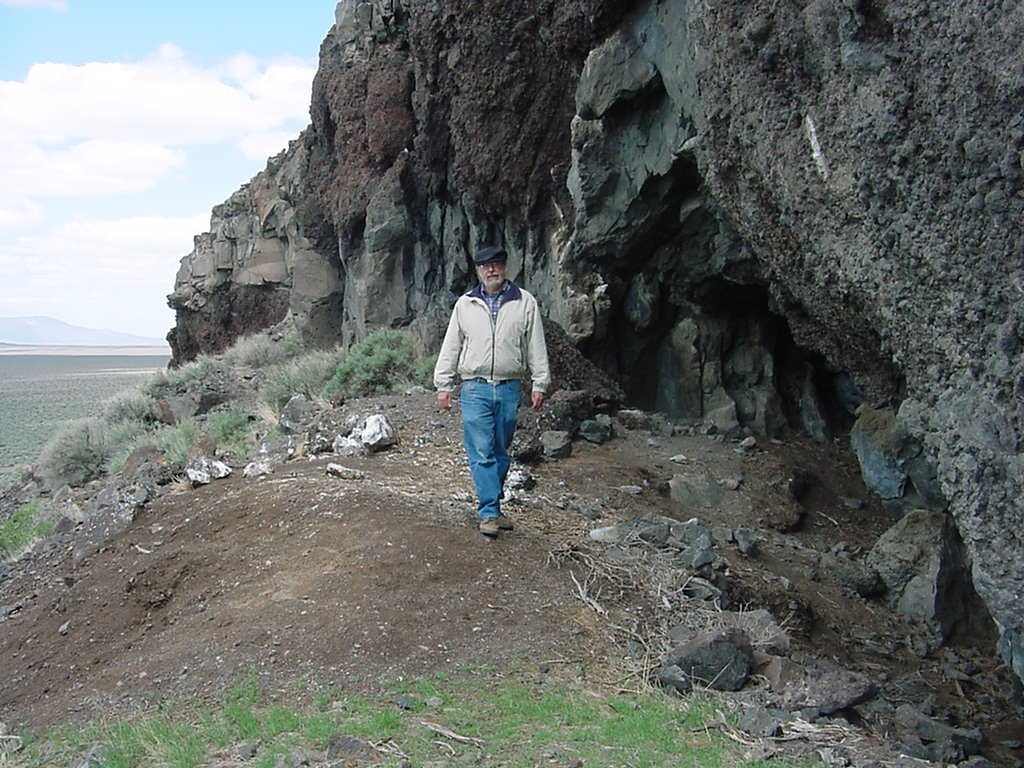Archaeological sites are windows into humanity’s distant past, revealing the lives, cultures, and innovations of ancient civilizations. From monumental structures to humble shelters, these tell stories of our ancestors’ resilience and ingenuity. Each discovery not only uncovers the physical remnants of early human history but also deepens our understanding of how societies evolved over thousands—or even millions—of years. This article explores some of the world’s oldest archaeological sites, showcasing their significance and the remarkable insights they provide into our shared history.
Sechin Bajo

Located in the Casma Valley of Peru, Sechin Bajo is a significant archaeological site with ruins dating from approximately 3500 BCE to 1300 BCE or 5,500 years ago. Excavations have uncovered a circular plaza constructed of rocks and rectangular adobe bricks, indicating advanced architectural skills for its time. It is among the oldest known centers of civilization in the Western Hemisphere, predating many other monumental constructions in the Americas. Artifacts suggest that it was a hub of cultural and ceremonial activities, reflecting a complex society. The discovery of friezes and other decorative elements points to a rich tradition of artistic expression. Ongoing research continues to shed light on the development of early urban settlements in the region. Its contributions are crucial for understanding the evolution of pre-Columbian civilizations in South America.
Amnya Complex

The Amnya Complex, located in western Siberia near the Ob River, is estimated to be between 6,000 and 7,000 years old, dating back to the early Neolithic and Chalcolithic periods (around 5000–4000 BCE). It is among the older known fortified settlements in northern Eurasia. The Amnya complex, located near the Amnya River in the lower Ob basin of western Siberia, dates back to the early Neolithic and Chalcolithic periods. It comprises two sections, Amnya I and Amnya II, each featuring a series of pit-houses built atop a steep escarpment. Amnya I is notable for its defensive earthworks, including banks and ditches, making it one of the oldest known fortified settlements. The site’s construction by hunter-gatherer populations predates the arrival of agriculture in the region, indicating complex social structures. Excavations have revealed evidence of frequent rebuilding, possibly due to conflicts, suggesting a dynamic and resilient community. It offers valuable insights into early human settlement patterns and defensive strategies in northern Eurasia.
Göbekli Tepe

Göbekli Tepe, located in southeastern Turkey, is one of the world’s earliest known monumental sites, constructed around 9500 BCE or 11,500 years ago. This prehistoric temple complex features massive stone pillars arranged in circular formations, adorned with intricate carvings of animals and symbols. It predates Stonehenge by thousands of years, underscoring its importance in human history. Excavations since the 1990s have revealed that it was likely a ceremonial center, possibly used by hunter-gatherers before the advent of agriculture. Its sophisticated architecture challenges traditional theories about societal development during the Neolithic era. Its purpose remains a topic of debate, ranging from a religious sanctuary to a communal gathering place. It continues to shed light on the origins of organized societies and early human spirituality.
Paisley Caves

The Paisley Caves in Oregon, USA, offer some of the earliest evidence of human presence in North America, dating back around 14,300 years. Excavations uncovered human coprolites (fossilized feces), providing definitive proof of habitation during the late Pleistocene era. Artifacts such as stone tools associated with the Western Stemmed Tradition were also discovered, showcasing early technological innovation. The evidence challenges the Clovis-first model of human migration into the Americas, suggesting an earlier wave of settlement. Researchers believe that these early inhabitants lived in small groups, relying on diverse resources for survival. Its discoveries have significantly contributed to understanding the peopling of the New World. Paisley Caves remain a key site for ongoing studies into prehistoric human life and migration.
Chauvet Cave

Chauvet Cave, located in the Ardèche region of France, is home to some of the oldest known prehistoric art, dating back approximately 32,000 to 36,000 years. Discovered in 1994, it features over 400 paintings and engravings of animals such as horses, lions, and mammoths, showcasing remarkable artistic skill. These works are believed to have had spiritual or ritualistic significance, reflecting the beliefs and practices of early humans. It also contains evidence of habitation, including hearths and tools, though it appears to have been primarily a ceremonial site. The artwork’s depth and complexity reveal the sophisticated cognitive abilities of its creators. It is sealed off to the public to preserve its fragile ecosystem, with a detailed replica available for study and visitation. It remains a crucial site for understanding the artistic and symbolic expressions of early Homo sapiens.
Gabarnmung

Gabarnmung, also known as Nawarla Gabarnmung, is an archaeological and rock art site in southwestern Arnhem Land, Northern Territory, Australia. Habitation of the site has been dated to at least 44,000 years ago, placing it among the oldest radiocarbon-dated sites in Australia. The rock shelter features prehistoric paintings of fish, wallabies, crocodiles, and human figures, showcasing the rich cultural heritage of the Indigenous Australians. Excavations have revealed ground-edge stone axes, with one fragment dated at 35,500 years old, indicating advanced tool-making skills. Its continuous use over millennia highlights the deep connection between the Indigenous people and their land. It provides invaluable insights into the artistic and technological developments of early human societies in Australia. Its preservation and study are essential for understanding the continent’s ancient history.
Blombos Cave

Blombos Cave, located on the southern coast of South Africa, provides evidence of human habitation dating back at least 100,000 years. Excavations since 1991 have uncovered significant artifacts, including engraved ochre pieces, shell beads, and bone tools, highlighting the cognitive and cultural advancements of early Homo sapiens. The engraved ochre, dated to around 75,000 years ago, is among the earliest examples of symbolic thought and artistic expression. The site also contains evidence of complex subsistence strategies, with remains of shellfish and other food sources showing advanced dietary habits. It demonstrates that modern human behaviors, such as abstract thinking and symbolic communication, were present much earlier than previously believed. Its findings have reshaped theories about the timeline of human cognitive development. It continues to be a focal point for research into the origins of modern human culture.
Theopetra Cave

Theopetra Cave, located in Thessaly, Greece, is one of the oldest continuously inhabited archaeological sites, dating back approximately 135,000 years. Excavations since 1987 have revealed a rich sequence of artifacts from the Paleolithic, Mesolithic, and Neolithic periods. Its most notable feature is a 23,000-year-old stone wall, believed to be the world’s oldest human-made structure. It provides a detailed record of climatic changes and their impact on human occupation and technology. Children’s footprints discovered in the cave offer a rare glimpse into the lives of its inhabitants. It has become a key site for understanding human adaptation to environmental changes over millennia. Its findings continue to enhance knowledge of prehistoric life in Europe.
Jebel Irhoud

Jebel Irhoud in Morocco is one of the most significant archaeological sites for studying human origins, with fossils dating back approximately 300,000 years. It was accidentally discovered by miners in 1961, and subsequent excavations revealed Homo sapiens remains. These findings pushed back the timeline of modern human emergence by about 100,000 years, challenging previous theories. Alongside the fossils, researchers uncovered stone tools and evidence of fire use, highlighting the advanced cognitive abilities of these early humans. The discoveries suggest that modern humans evolved across Africa rather than in a single “cradle of humanity.” It has been pivotal in redefining our understanding of human evolution. Its artifacts and fossils continue to inform theories about the dispersal and adaptation of early humans.
Atapuerca

The Atapuerca Mountains in northern Spain house a network of caves with evidence of human occupation spanning over a million years. Excavations at the site have revealed some of the earliest human remains in Europe, dating back approximately 1.2 million years. Among its most famous discoveries is the “Pit of Bones” (Sima de los Huesos), which contains fossils of Homo heidelbergensis. It has provided valuable insights into early human behavior, including the use of tools and possible instances of ritual practices. The stratified deposits offer a detailed timeline of human evolution and migration in Europe. Designated a UNESCO World Heritage Site, it remains a cornerstone for understanding early human ancestry. Its ongoing excavations continue to yield groundbreaking discoveries about human evolution.
This article originally appeared on Rarest.org.
More from Rarest.org
12 Rare Mammals That Live in the World’s Tallest Mountains

High-altitude regions around the world are home to some of the most unique and uncommon mammals on the planet. They have adapted to survive in the harsh, cold, and rugged environments of the world’s tallest mountains. Read More.
20 Exotic Birds With Stunning Plumage Found in Remote Islands

The world’s remote islands are home to some of the most exotic and visually stunning birds on the planet. These unique species often develop vibrant plumage and fascinating behaviors, thriving in isolated habitats far from human disturbance. Read More.
19 Unique Freshwater Fish Thriving in Lakes and Rivers

Freshwater lakes and rivers are home to a fascinating array of unique fish species, each thriving in its own way within these diverse ecosystems. From ancient predators to gentle giants, these fish have adapted to a wide range of environments, showcasing remarkable traits and behaviors. Read More.
